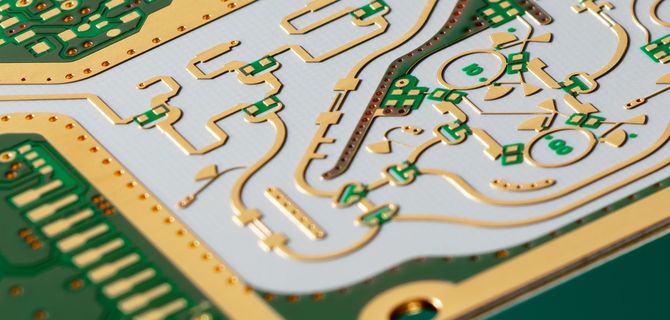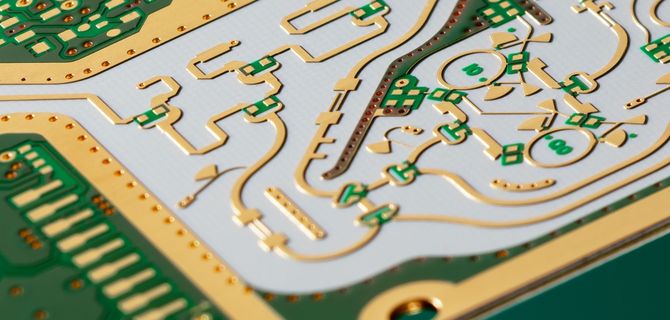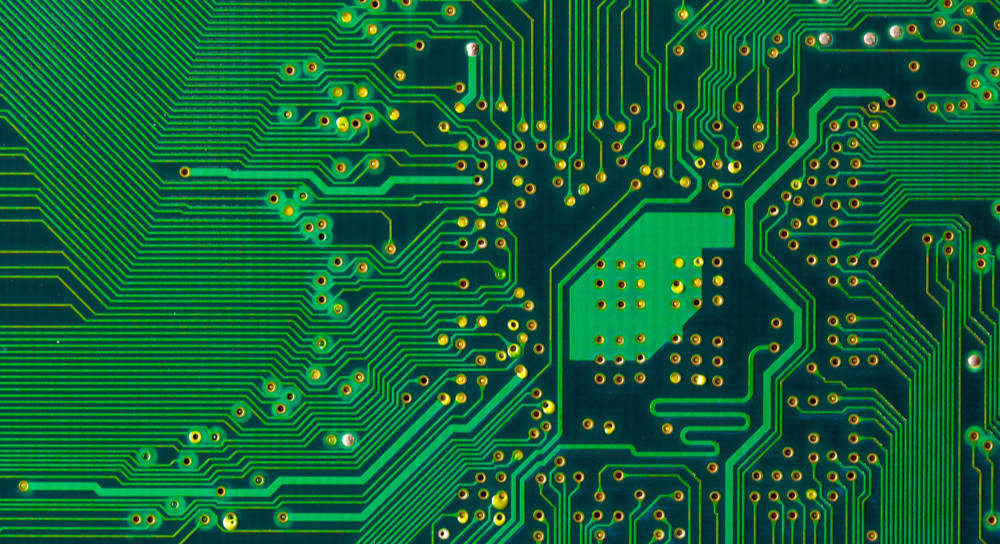
Summary of experience in mobile phone RF PCB board layout and wiring
Due to theoretical uncertainty, the design of the touring boar distribution system printed by Radio frequency (RF) is usually described as "black art", but this view is only partially correct. There are many guiding principles for RF. Circuit boar d can and should not follow the neglected rules of design However, when it comes to actual design, the real trick is how to compromise these standards and laws when they cannot be implemented accurately due to various design constraints Of course, there are many important RF design topics worth discussing, including impedance and impedance matching, insulation layer information and laminates, wavelength and standing wave. In addition, these have a great impact on the EMC and EMI of mobile phones The conditions that must be met when designing an RF layout are summarized:
Printed circuit board

1. Isolate the high power RF amplifier (HPA) and low noise amplifier (LNA) as much as possible Briefly, the high power RF transmitter circuit is far away from the low power RF receiver circuit Mobile phones have many functions and components, but the PCB board space is very small. Considering the limitations of the wiring design process, all these require relatively high design skills At this time, it may be necessary to design four to six layers of PCB boards to work alternately instead of simultaneously High power circuits may also sometimes include RF buffers and voltage controlled oscillators (VCOs). Ensure that at least one of the high power areas on the PCB without via is completely grounded Of course, more copper is better Sensitive analog signals should be as far away from high-speed digital and RF signals as possible
2. The design partition can be divided into physical partition and power partition Physical zoning mainly involves component placement, orientation, and masking; Power partition can be further decomposed into distribution partition, RF track, sensitive circuit and signal, and grounding
2.1 We discuss physical zoning. Element placement is the key to RF design An effective technology is to first fix the components on the RF path, and adjust their orientation to minimize the length of the RF path, keep the input away from the output, and separate the components as much as possible Power circuit and low power circuit An effective board stacking method is to arrange the second layer below the surface layer on the main ground plane (main ground) Reducing the size of the through-hole on the RF path will not only reduce the path inductance, but also reduce the ghost solder joints on the main ground, and reduce the chance of RF energy leakage to other areas in the stack In physical space, linear circuits such as multistage amplifiers are usually enough to isolate multiple RF areas from each other, but duplexers, mixers, and IF amplifiers/mixers always have multiple RFs. If signals interfere with each other, care must be taken to minimize this effect
2.2 RF and IF traces shall be crossed as far as possible, and a ground shall be separated between them as far as possible The correct RF path is very important to the performance of the entire PCB, which is why component placement usually takes up most of the time in the design of mobile phone PCB In the design of mobile phones, PCB boards and low noise amplifier circuits can usually be placed on PCB boards, and high-power amplifiers can be placed on the other side. They are finally connected to the RF end and baseband processing on the same side through duplexers On the antenna of the equipment Some skills are needed to ensure that the through vias do not transfer RF energy from one side of the circuit board to the other. A common technology is to use blind holes on both sides By arranging through vias in the area free from RF interference on both sides of PCB, the harmful effects of through vias can be minimized Sometimes it is not possible to ensure adequate isolation between multiple circuit blocks. In this case, metal masks must be considered to mask the RF energy in the RF area The metal mask layer must be welded to the ground and isolated from the components With a proper distance, it takes up valuable resources PCB board It is important to ensure the integrity of the mask as much as possible The digital signal line entering the metal mask cover should go deep into the inner layer as far as possible, and the PCB wiring layer is below the ground plane RF signal lines can be led out from the wiring layer of the small gap at the bottom of the metal mask and the grounding gap, but should be distributed around the gap as much as possible. The grounding on different layers can be connected together through multiple through-holes
2.3 Proper and effective chip power decoupling is also very important Many RF chips with integrated linear circuits are very sensitive to power supply noise. Generally, each chip needs at most four capacitors and one isolation inductor to ensure that all power supply noise is filtered Integrated circuits or amplifiers usually have open drain outputs. In retrospect, a pull-up inductor is required to provide high impedance RF loads and low impedance DC power The same principle applies to the decoupling of the power supply at the inductor side Some chips require multiple power supplies to work. Recall that you may need two or three groups of capacitors and inductors to decouple them separately. Inductors are rarely connected in parallel, because this will generate an air core transformer and induce mutual interference signals. Therefore, the distance between them should be at least the height of one of the devices, or they should be arranged at right angles to reduce their mutual inductance
2.4 The principle of electrical partition is usually the same as that of physical partition, but there are some other factors Some parts of the phone work under different voltages and are controlled by software to extend battery life This means that the telephone nee power distribution system operates on multiple power supplies, which will cause more problems for isolation The power supply is usually introduced from the connector and is immediately decoupled to filter out any noise outside the circuit board before being distributed through a set of switches or voltage regulators Most circuits on the mobile phone PCB have relatively small DC current, so the track width is usually not a problem. However, it is necessary to run a separate high current track as wide as possible for the power supply of the high power amplifier to minimize the transmission voltage drop To avoid excessive current loss, multiple vias are required to transfer current from one layer to another In addition, if the high power amplifier is not fully decoupled at its power supply pin, the high power noise will radiate and cause various problems The grounding of high power amplifier is very important, and usually requires a metal mask In most cases, it is also important to ensure that the RF output is kept away from the RF input This also applies to amplifiers, buffers and screening programs In the worst case, amplifier and buffer outputs may self oscillate if they echo to their inputs with appropriate phase and amplitude In any case, they will work stably at any temperature and voltage In fact, they may become unstable and add noise and intermodulation to the RF signal If the RF signal line must be looped back from the input to the output of the filter, the band-pass characteristics of the filter will be seriously damaged In order to obtain good isolation between input and output, first, the surrounding area of the screening program must be grounded, and second, the grounding should be placed in the lower area of the screening program and connected to the main grounding around the screening program It is also a good idea to keep the signal wires that need to pass through the filter as far away from the filter pins as possible Also, be careful to ground anywhere on the circuit board or introduce coupling channels Sometimes, single ended or balanced RF signal line can be selected. The principles of cross interference and EMC are the same./EMI is applied here If properly wired, balancing RF signal lines can reduce noise and cross interference, but their impedance is usually very high, and reasonable line width should be maintained to obtain impedance, detection, and load matching with the source There may be some difficulties in actual wiring Buffer can be used to improve isolation, because it can divide the same signal into two parts and use it to drive different circuits, especially when LO may need a buffer to drive multiple mixers When the mixer reaches common mode isolation at RF frequency, it cannot work normally Buffer can well isolate impedance changes at different frequencies, so that circuits will not interfere with each other Buffers are very helpful for design. They can be placed in the power distribution system directly behind the nee circuit to be driven. In summary, the high power output track is very short because the input signal level of the buffer is relatively low. In addition, they are not easily affected by other circuits on the board A circuit that causes interference Voltage Controlled Oscillators (VCOs) convert changing voltages to changing frequencies. They are used for high-speed channel switching, but they also convert a small amount of noise in the control voltage into a small frequency change, adding noise to the RF signal







